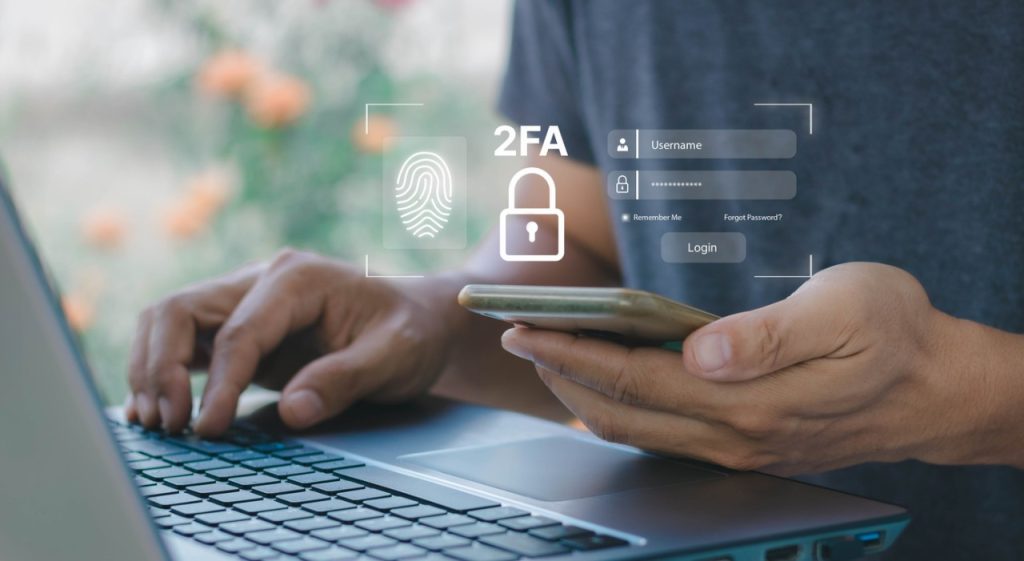In an increasingly digital world, the need for robust identity verification mechanisms is paramount. Digital identity verification ensures that individuals and organizations are who they claim to be, preventing fraud and enhancing security across various online platforms. This article explores the concept of digital identity verification, its importance, methods, benefits, challenges, and future trends.

What is Digital Identity Verification?
Digital identity verification refers to the process of confirming the identity of individuals or entities through electronic means. This process typically involves the use of various technologies and data sources to verify that a person or organization is legitimate and their credentials are accurate. Digital identity verification is crucial for accessing services, conducting transactions, and ensuring secure interactions in the digital realm.
Importance of Digital Identity Verification
- Security and Fraud Prevention:
- Mitigating Identity Theft: Digital identity verification helps prevent identity theft by ensuring that individuals are correctly identified before accessing sensitive information or conducting transactions. This is particularly important for financial institutions and online services that handle personal and financial data.
- Reducing Fraud: Effective identity verification reduces the risk of fraudulent activities, such as account takeovers, unauthorized transactions, and phishing attacks. By confirming the identity of users, organizations can safeguard their systems and protect their customers.
- Regulatory Compliance:
- Legal Requirements: Many industries are subject to regulatory requirements that mandate identity verification to comply with laws and regulations. For example, financial institutions must adhere to Anti-Money Laundering (AML) and Know Your Customer (KYC) regulations, which require robust identity verification processes.
- Data Protection: Compliance with data protection regulations, such as the General Data Protection Regulation (GDPR) and the California Consumer Privacy Act (CCPA), often involves implementing strong identity verification measures to ensure that personal data is handled securely.
- Enhanced User Experience:
- Streamlined Access: Digital identity verification can streamline user access to online services and platforms by providing a seamless and efficient authentication process. This improves the overall user experience and reduces friction during login or transaction processes.
- Personalization: Accurate identity verification enables personalized services and offers tailored to individual preferences. By verifying user identities, organizations can deliver relevant and customized experiences based on verified information.
Methods of Digital Identity Verification
- Biometric Authentication:
- Fingerprint Recognition: One of the most common biometric methods, fingerprint recognition involves scanning and matching an individual’s fingerprints against stored data. This method is widely used in smartphones, security systems, and access control applications.
- Facial Recognition: Facial recognition technology analyzes facial features and patterns to verify identity. It is used in various applications, including unlocking devices, security screening, and surveillance systems.
- Iris and Retina Scanning: Iris and retina scanning technologies analyze the unique patterns in the eye to confirm identity. These methods offer high accuracy and are used in secure environments, such as border control and high-security facilities.
- Document Verification:
- ID Scanning: Document verification involves scanning and validating government-issued identification documents, such as passports, driver’s licenses, and national ID cards. This process ensures that the documents are authentic and belong to the individual presenting them.
- Optical Character Recognition (OCR): OCR technology extracts and verifies information from scanned documents, such as names, dates of birth, and document numbers. OCR is commonly used in conjunction with other verification methods to validate document authenticity.
- Knowledge-Based Authentication:
- Security Questions: Knowledge-based authentication involves asking users security questions that only they should know the answers to. This method is often used in conjunction with other verification methods to enhance security.
- One-Time Passwords (OTPs): OTPs are temporary codes sent to a user’s mobile device or email for authentication. Users must enter the OTP to verify their identity, providing an additional layer of security.
- Behavioral Biometrics:
- Keystroke Dynamics: Keystroke dynamics analyze typing patterns, such as speed and rhythm, to verify user identity. This method can detect anomalies in typing behavior that may indicate fraudulent activity.
- Mouse Movements and Gestures: Behavioral biometrics also include analyzing mouse movements and gestures to identify users. This method is used to detect unusual behavior and prevent unauthorized access.

Benefits of Digital Identity Verification
- Enhanced Security:
- Fraud Prevention: Digital identity verification reduces the risk of fraud by ensuring that only authorized individuals can access sensitive information or conduct transactions. This enhances the overall security of online systems and platforms.
- Protection Against Cyber Threats: By verifying user identities, organizations can protect against various cyber threats, including phishing attacks, account takeovers, and identity theft.
- Regulatory Compliance:
- Meeting Legal Requirements: Implementing robust identity verification processes helps organizations comply with regulatory requirements and avoid legal penalties. This is essential for industries such as finance, healthcare, and telecommunications.
- Data Privacy: Compliance with data protection regulations ensures that personal information is handled securely and that users’ privacy is protected.
- Improved User Experience:
- Seamless Access: Digital identity verification streamlines user access to online services and platforms, providing a smooth and efficient authentication process. This reduces the likelihood of user frustration and abandonment.
- Personalized Services: Accurate identity verification enables organizations to offer personalized services and experiences based on verified user information.
Challenges and Considerations
- Privacy Concerns:
- Data Collection: Digital identity verification often involves collecting and storing sensitive personal data. Organizations must ensure that this data is handled securely and in compliance with privacy regulations.
- Consent and Transparency: Users should be informed about how their data will be used and must provide consent for its collection and processing. Transparency in data handling practices is crucial for building trust.
- Technical Limitations:
- Accuracy and Reliability: The accuracy and reliability of digital identity verification methods can vary. For example, biometric systems may face challenges in different lighting conditions or with users who have physical variations.
- False Positives and Negatives: Verification methods may produce false positives or negatives, leading to incorrect authentication results. Ensuring the accuracy of verification systems is essential for maintaining security and user trust.
- Cost and Implementation:
- Infrastructure Costs: Implementing advanced identity verification systems can be costly, particularly for small and medium-sized enterprises. Organizations must weigh the benefits against the costs of deploying and maintaining these systems.
- Integration Challenges: Integrating digital identity verification systems with existing infrastructure and processes can be complex. Ensuring seamless integration and minimal disruption is important for effective implementation.
The Future of Digital Identity Verification
- Advancements in Technology:
- AI and Machine Learning: Future developments in AI and machine learning will enhance the capabilities of digital identity verification systems, improving accuracy, adaptability, and fraud detection.
- Blockchain Technology: Blockchain technology may play a role in digital identity verification by providing secure and decentralized methods for managing and verifying identities.
- Increased Adoption:
- Widespread Use: As digital interactions continue to grow, the adoption of digital identity verification will become more widespread. Organizations across various industries will increasingly rely on these systems to ensure secure and trustworthy interactions.
- Focus on Privacy and Security:
- Enhanced Privacy Measures: Future developments will likely focus on enhancing privacy measures and ensuring that digital identity verification systems align with evolving data protection regulations.
- User Empowerment: Empowering users with control over their digital identities and ensuring transparency in data handling practices will be key priorities for the future of digital identity verification.

Conclusion
Digital identity verification is a crucial component of modern digital security, providing essential protection against fraud and ensuring regulatory compliance. By leveraging advanced technologies such as biometrics, document verification, and behavioral analytics, organizations can enhance security, streamline user experiences, and safeguard sensitive information. While challenges related to privacy, accuracy, and implementation persist, ongoing advancements and increased adoption will shape the future of digital identity verification. As technology continues to evolve, ensuring robust and secure identity verification processes will remain essential for maintaining trust and security in the digital age.


